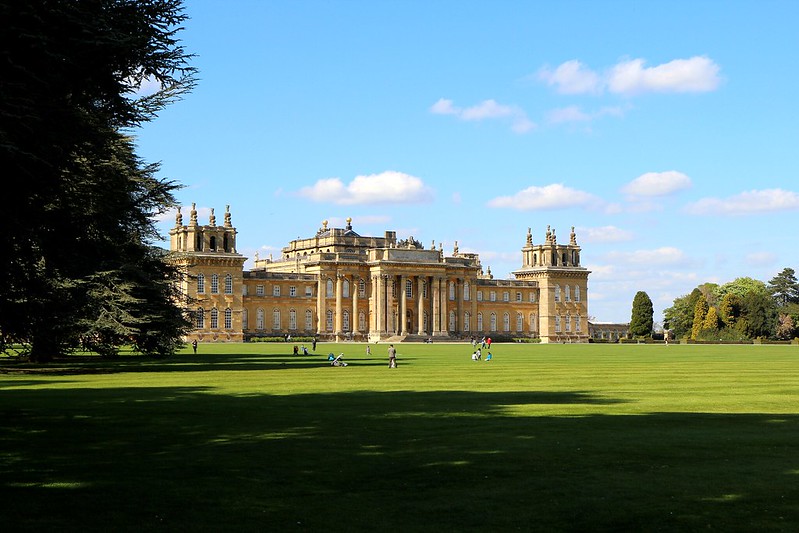The Cotswolds landscape reflects a remarkable 6,000 years of human influences, so we have gathered 10 fascinating places of historic importance to discover
Timeless. Picturesque. Quintessential rural England. Such descriptions of the Cotswolds readily spill across guide books. And who can disagree when exploring the limestone villages gathered at the escarpment’s foot and in the valley bottoms; beguiled by the vernacular details of traditional Cotswold house and home, limestone slate on steep-pitched roofs, tall gables, mullioned windows, bold chimneys, and a sprinkle of thatch here and there for variety.
Looking at the bigger picture, of course the landscape has been, and continues to be full of change, in no little part thanks to human influences over the last 6,000 years. The remarkable thing is that so much of these human influences can still be seen, living with us today and even helping to shape the future.
If you fancy a landscape journey through time, here are a few picks for fascinating days out.
• Ritual monuments
Neolithic funerary and ritual monuments draw us into endless speculation over our ancestors’ beliefs, and the local landscape is imprinted with more than 100 distinctive ‘Cotswold-Severn’-style tombs. But there’s no greater mysterious experience than to wander amid the Neolithic/Bronze Age Rollright Stones on the Oxfordshire/Warwickshire border, to wonder if the King’s Men circle was aligned to serve an astronomical function, or what ceremonies took place here.
• Iron command of the landscape
Take a breezy step along the Cotswold Way to Uley Bury Iron Age Hill Fort and admire how our forebears made the most of the natural defences and strategic outlook provided by the escarpment – adding a double line of grassy ramparts for good measure. Probably occupied from 300BC to AD100, the vast 32-acre site some 750ft up commands views far over the surrounding landscape – great today for clearing the mind and rebalancing the soul.
• What the Romans did for us
Attracted by countryside ripe for hunting and farming, the Romans arrived in the Cotswolds shortly after AD43. We still travel their roads – the Fosse Way (A433/A429), Ermin Way (A417) and Akeman Street (B4425) – and live in settlements that grew from their occupation: Cirencester, Bath, Gloucester. Touring Chedworth Roman Villa at Yanworth, poring over superb mosaics and mod cons like underfloor heating, you get a real feel for the lifestyle of some of the richest folk in the land.
• Walls of wool
Narrow alleys once used to funnel sheep to the famous fairs of Stow-on-the-Wold; merchants’ houses, almshouses and churches built by wealth from the ‘Golden Fleece’: the medieval heydays of wool have influenced streetscapes throughout the Cotswolds. Catch up with ‘flower of the wool merchants of all England’ William Grevel, commemorated in a 15th-century brass in the ‘wool church’ of St James, Chipping Campden; then see his splendid Grevel House, on the High Street opposite the 14th-century Woolstaplers’ Hall where fleeces were sold,
• Back to the future: dry stone walling
Earliest local examples of dry stone walling date back 5,000 years, but most that we see today originate from the enclosure of open fields and sheepwalks in the 18th/19th centuries. Over 4,000 miles of such walls criss-cross the Cotswolds, and with the resurgence of interest in traditional rural crafts there’s never been a better time to learn the skill of making and maintaining them into the future. Why not try your hand on a course with Cotswolds Rural Skills?
• Commons sense
Understandably, locals who enjoyed rough grazing rights resisted enclosures in the 18th /19th centuries: one reason why the Cotswolds has such a fine network of commons today. Ramble Cleeve Common – records of ‘common land’ here date from 1150 – and you can spot evidence of all sorts of activities through time (not least quarrying). Once, 5,000 animals grazed here; now sheep, cattle and human efforts help maintain the wildflower-rich grasslands, balancing conservation, agriculture and recreation. Download a walk and enjoy the wide open sense of freedom.
• Not so run of the mill
You can follow the story of cloth making from weavers’ cottages at Castle Combe and Bradford-on-Avon to the mills, terraces and clothiers’ townhouses shoehorned into the Stroud Valleys. In the 18th century the Cotswold Canals brought coal to Stroud’s textile mills as technology moved from water power (from fast flowing streams) to steam. Guided walks organised by Stroudwater Textile Trust and mill open days reveal more of this fascinating history. Or take a stroll, cycle or boat trip along the canals where modern restoration has given them new life for recreation.
• Park life
Eighteenth-century estate owners liked to keep up with the latest naturalistic landscape fashions; even so, the Cotswolds is remarkable for its density of magnificent parks and designed landscapes. The ubiquitous ‘Capability’ Brown swept all before at Blenheim Palace, and advised (along with Alexander Pope) at Prior Park Landscape Garden, Bath. The National Trust is celebrating 25 years of looking after the latter and guided tours highlight restoration projects.
• Green fingers
Almost every style of gardening can be explored in the Cotswolds: Jacobean-style ‘compartments’ at Chastleton House near Moreton-in-Marsh, flamboyant Painswick Rococo Garden, the revival of a 1930s leisure haven at Upton House near Banbury, outdoor Arts & Crafts ‘rooms’ at Hidcote near Chipping Campden. Taking a leaf out of many traditions, classic English cottage to Tibetan-inspired colours, Prince Charles’ Royal Gardens at Highgrove also lead the way into the future by championing organic, sustainable management principles.
• Farming today
Farming, more than any other human activity, has shaped the Cotswolds countryside, Neolithic woodland clearances to medieval heydays of sheep, strip farming to enclosures, and it continues to do so today with some 87% of the AONB classed as agricultural. Find out about modern farming practices by visiting a farm on LEAF (Linking Environment and Farming) Open Farm Sunday. Or discover more about local breeds like Cotswold Lion sheep at Adam Henson’s Cotswold Farm Park.







































